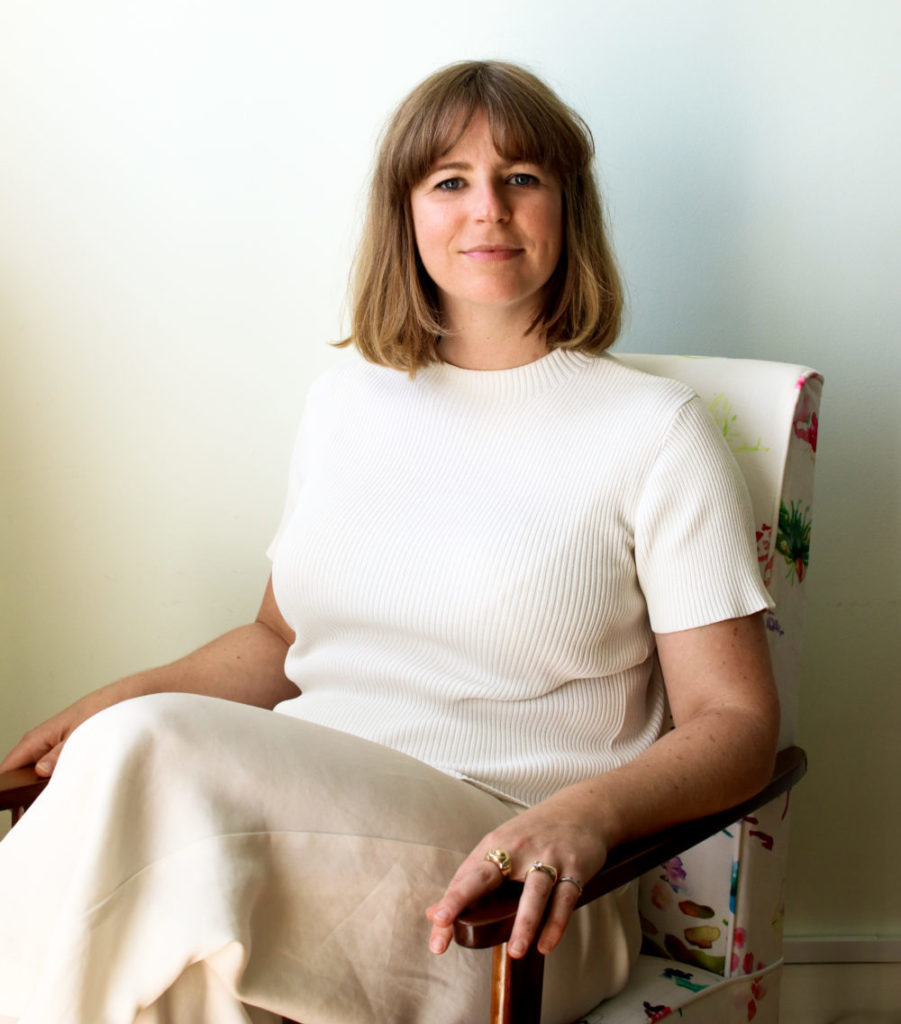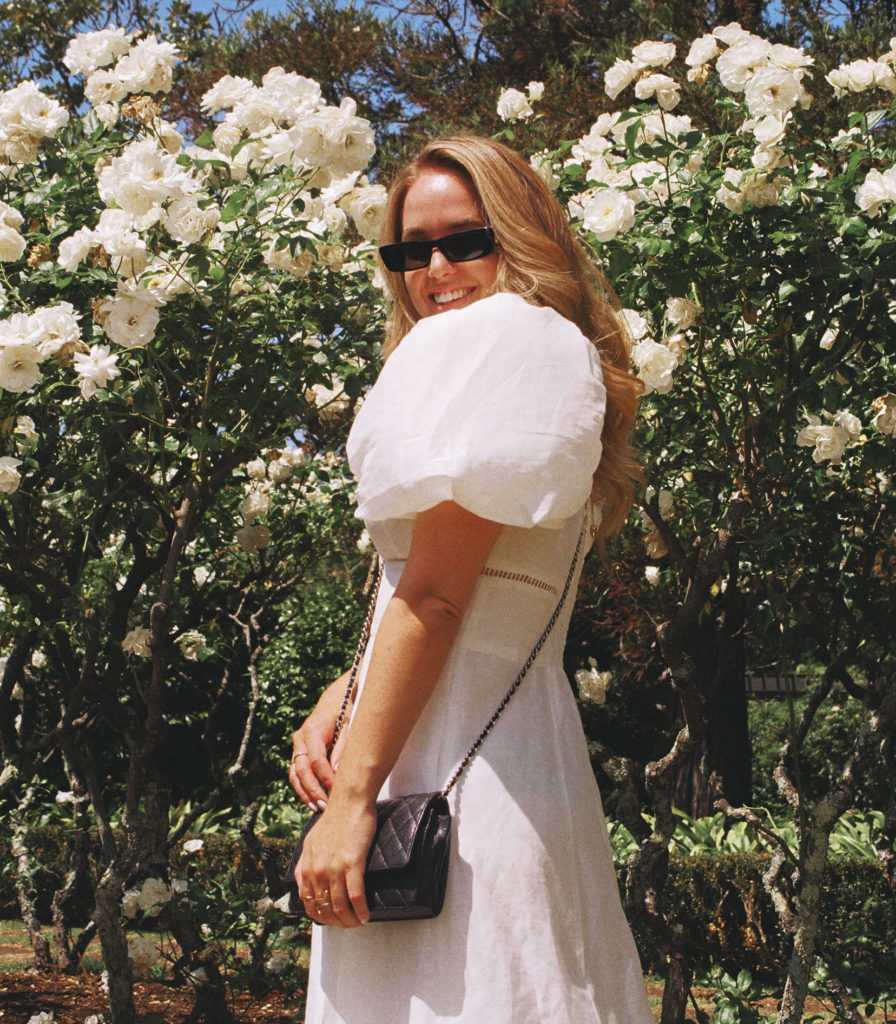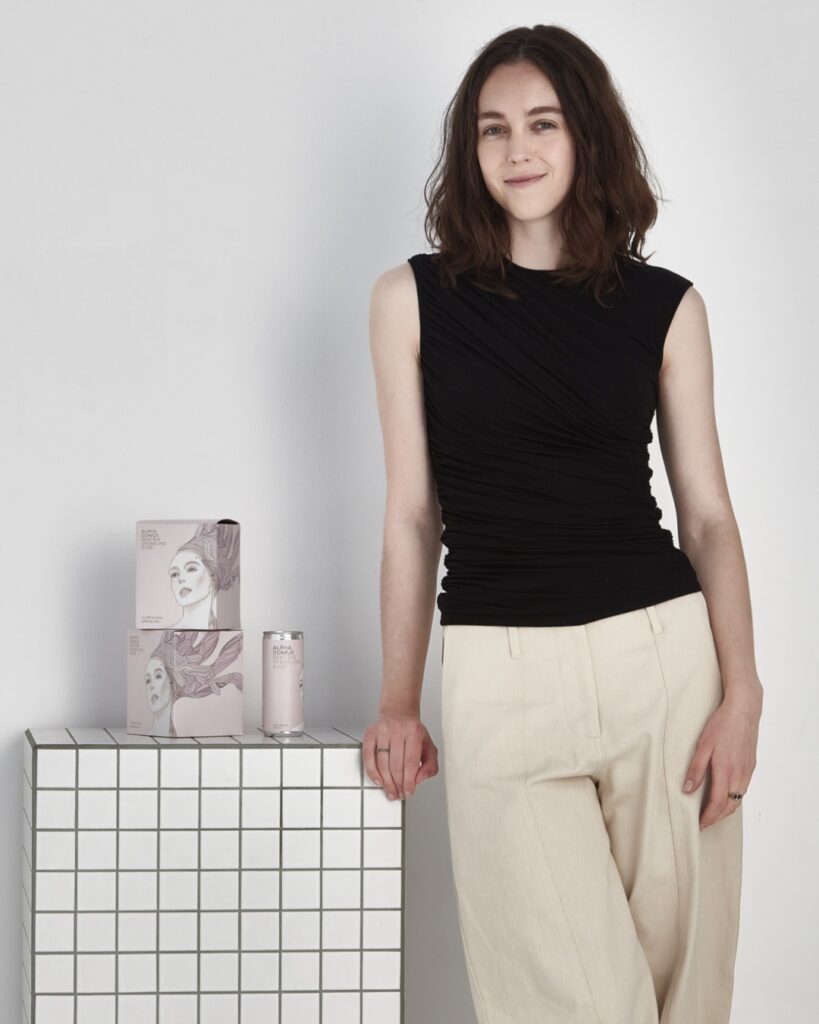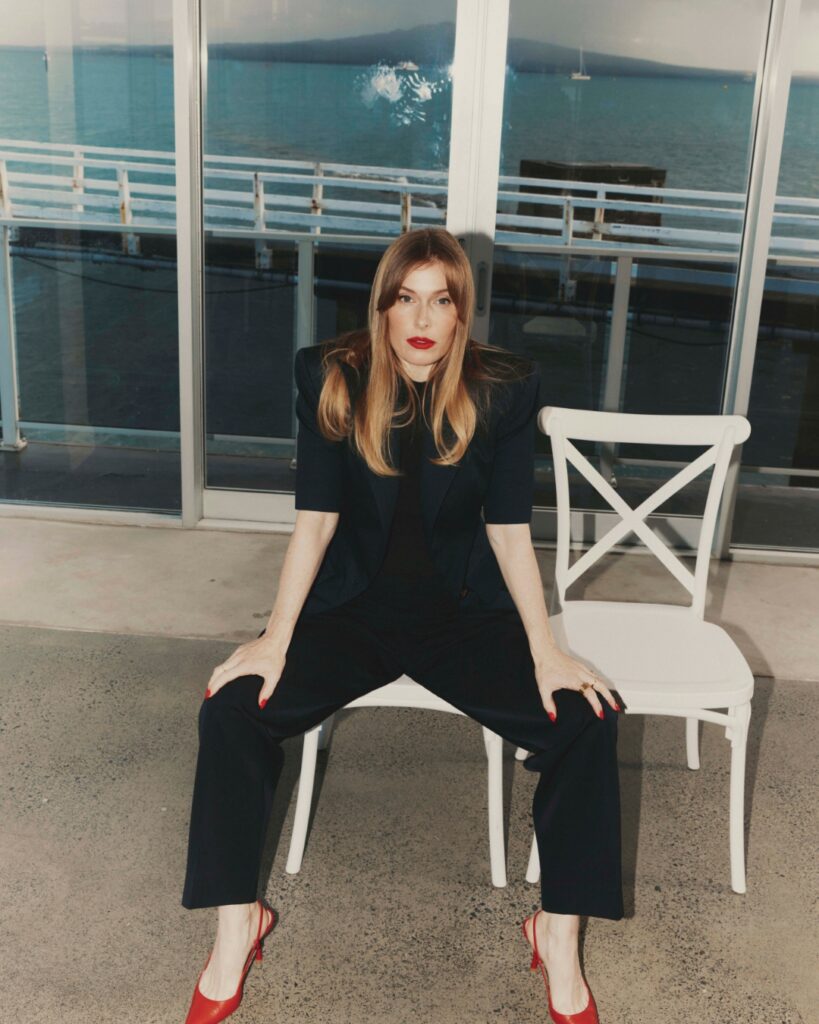Words: Sarah Murray

It was over lockdown last March when Emily Miller-Sharma, the general manager of Ruby and designer of Liam, started stitching. She was anxious and couldn’t focus on work, so instead with a needle and thread she would sit and freeform stitch a calendar, noting down each day who she had spoken to on the phone. Somehow, the process of sitting and making something with her hands unfroze her brain. The more she stitched, the more she wished everyone could do it and she wondered how she could facilitate such a thing. It didn’t take long before she got an idea.
“That’s when I thought, We’ve got to sell our patterns,” says Miller-Sharma.
Within days, the company had three of its patterns from some of its best-selling Liam designs ready to sell. And sell they did. They put up two additional patterns and Miller-Sharma soon realised that, due to demand, what they needed was a whole collection. Enter Liam Patterns — a collection of 16 paper patterns for beginner, intermediate, and advanced sewers to make Liam designs in their very own homes. It’s something completely new for the company and it’s been very well received by the public.
“Everyone has said ‘Oh, that’s cool’. Some people haven’t used a sewing machine since they were at school when they made a pencil case,” says Miller-Sharma. “It feels good that people like it. There is a movement to being more sustainable and more mindful in your clothing consumption, and making things yourself helps with that.”
Sitting in the showroom of Ruby’s HQ, Miller-Sharma is dressed in a slim-fitting bias-cut azure-blue dress, with a mid-length puff hem. It’s one of the samples from the pattern collection and was made by using leftover fabric in the workroom. She takes me through the rack of samples they’ve made from the patterns — all created by using offcuts and fabric they had sitting around.
“My hope is that people use fabric they already have or find sustainable options for fabrication,” says Miller-Sharma. “I’m excited when I hear people have gone to op shops and buy vintage sheets because the sheets are already in existence so nothing new needs to be made — and they’re really cool prints!”
In conjunction with the patterns, Miller-Sharma leads a weekly Zoom session, where she goes through classes such as how to add fullness into a garment, working with the bias, or her personal view on how to sew a dart. It’s a process that allows budding sewers to glean tips from a professional, and, in turn, she says it’s made her fall in love with her job again.
While sewing your own clothes was once the norm, fast fashion and cheaper clothing production has worked to make the art of sewing a thing of the past. However, more recently crafting and sewing have seen something of a resurgence — particularly this year. International marketplace Etsy has seen a 737 per cent increase in searches for embroidery kits in the last six months, as people not only have more time at home due to the pandemic but are also continuing to question their consumer footprint. For Miller-Sharma, the Liam Patterns goes so much further than providing a pastime for Kiwi women. The patterns also align with her company’s ideology in moving towards a more circular model. They are printed on recycled paper, which is then turned into something of higher value once they put the company’s intellectual property (its patterns) onto it. Ultimately, the entire project is also working to educate.
“By making something with your hands, people understand the time they’ve put into it and how much thought and skill is involved in making a garment,” says Miller-Sharma. “When they experience that and then talk to their friends and family, it adds to the collective knowledge of the value of making clothes. I hope that will make us appreciate our clothing more.”

Sustainability is also at the core of Designer Wardrobe — the rental and online second-hand-clothing market that some may say has changed the way Kiwi women shop and acquire clothing. Long before founder and creative director Donielle Brooke launched the initial Facebook page in 2013 (which has subsequently been turned into a thriving website and three physical rental stores), she was like most girls. Her friends would come around on the weekends and borrow her clothes, and she would borrow theirs. The idea to do something like this was always in her head, but it wasn’t until she was diagnosed with thyroid cancer that she started a Facebook page for women to buy, sell, and swap their clothes. The ‘swap’ function is what eventually turned into the rental side of the business.
“When I started Designer Wardrobe, I heard a statistic that only 20 per cent of the clothes in people’s wardrobes are worn, and I thought, That’s so true,” she says. “There was only a small percentage of my wardrobe that I was actually wearing.”
Now, even though she has her pick of clothes, the savvy businesswoman’s wardrobe, is, well, almost empty.
“I do not have one dress in my wardrobe at the moment,” she says, laughing. “So far, this season I haven’t purchased anything new, just a few basic pieces second-hand that I need for summer. It’s a slow process. I’d just rather live and breathe this way of shopping rather than have massive wardrobe full of pieces. It’s such a good feeling.” When she does have a special occasion, Brooke says she will rent a dress, and, like many of the women who utilise her website, she often cleans out her clothes and sells pre-loved items.
“Now I have the smallest wardrobe,” she says. “I feel like you don’t need all the stuff that people think you do. It’s nice to take stock and take charge of that and be much more considerate.”
Globally, the second-hand market is growing. A 2019 survey by ThredUp, an online thrift store, found second-hand-clothing sales growing at a phenomenal rate. They also found that in the same year 62 million women bought second-hand products, which was up from 56 million the year before. And it shows no signs of slowing down with the global second-hand market (which includes everything from op shops to garage sales to curated second-hand online boutiques) projected to be worth US$64 billion by 2028. That means it will surpass fast fashion, which is predicted to be worth US$44 billion. And driving the increase are Millennials, accounting for 29 per cent of the market, and Generation Z making up 37 per cent. This is not news to Brooke, who has witnessed first-hand the shopping habits of the younger generations. She believes that not only are attitudes changing, but that the stigma surrounding shopping second-hand is gone.
“Young girls at high school have grown up with rental and second-hand, so it doesn’t have that stigma around it. It’s the norm,” says Brooke. “I think even a few years ago, if someone went to a formal event they might have been embarrassed to say they’d borrowed a friend’s outfit or shopped second-hand. But now people are proud and more forward about being conscious of our planet, and about shopping more sustainably.”
Textiles is estimated to be almost 4 per cent of landfill waste, that’s according to a 2006 statistic from the Ministry for the Environment. And it’s expected to rise.
While businesses like Designer Wardrobe and Ruby can’t control what people do with their clothes once they’ve been bought or made, they are happy to be doing something to combat this figure. But what about that instant feeling of gratification some get when clicking ‘add to cart’ while online shopping or when purchasing something new straight off the rack that’s never been worn? Can you still get that by renting, buying second-hand, or by making your own clothes? In the end, Miller-Sharma believes that you get so much more.
“There is a pride in making something yourself,” she says. “And once you’ve learnt to make your own clothes, you can quite quickly unpick a sleeve on a dress and then you have a new dress. By sewing something yourself, you’ve made it. You’re connected to it.”










